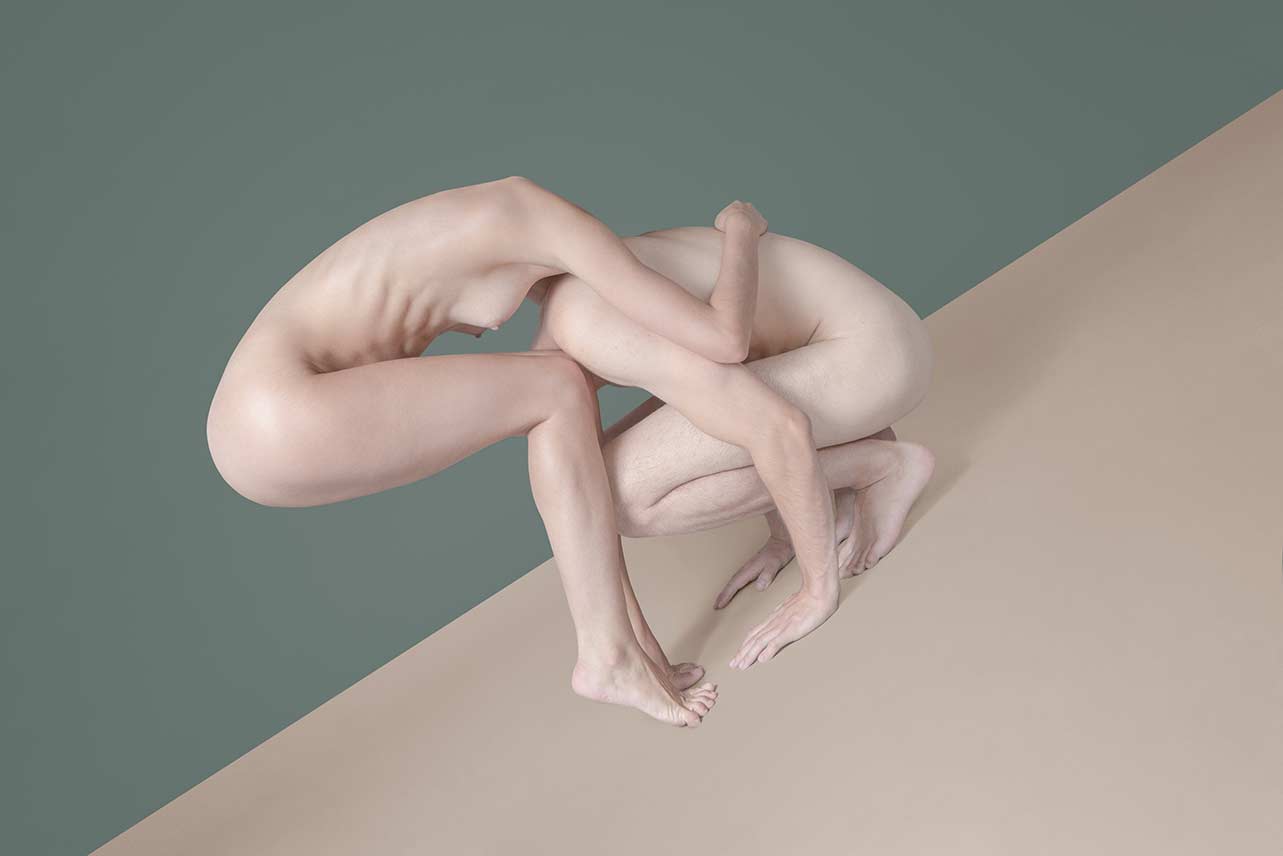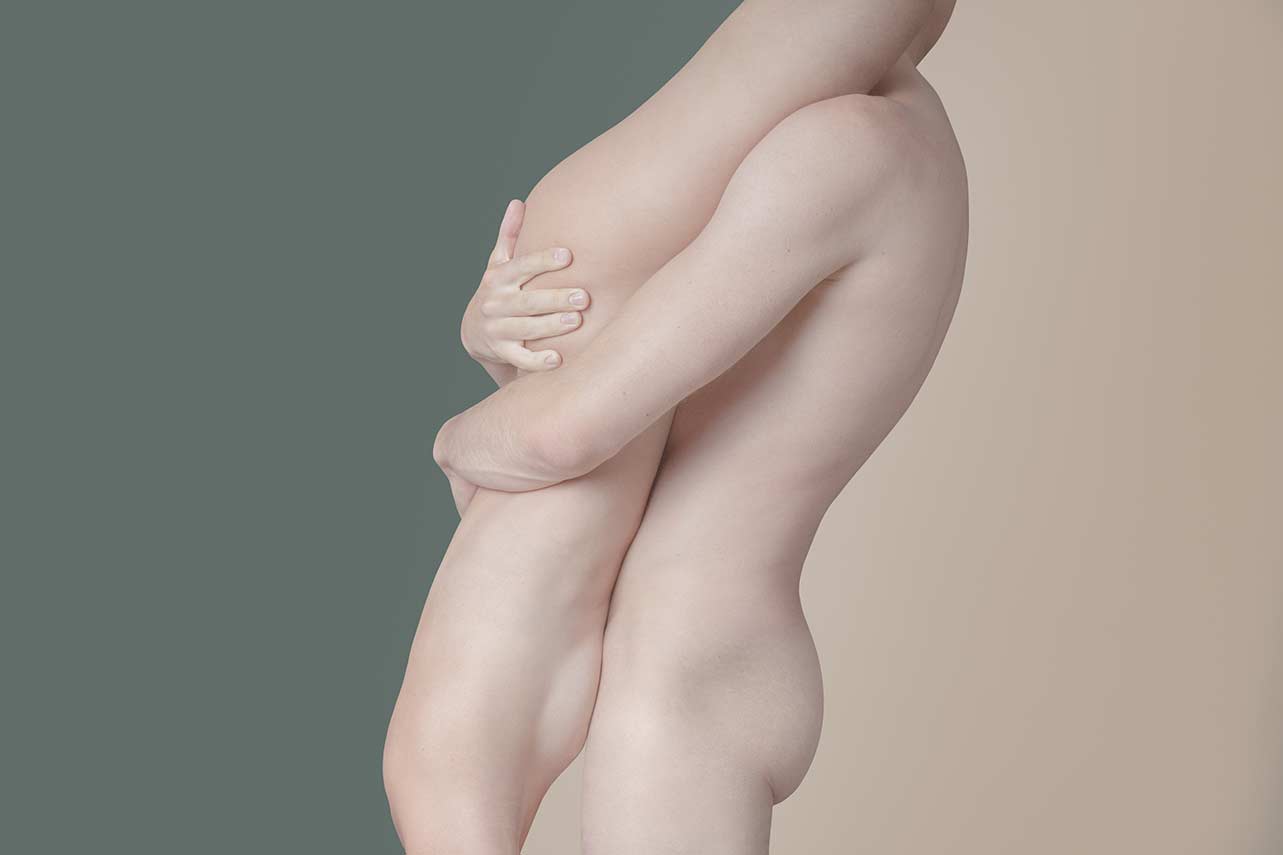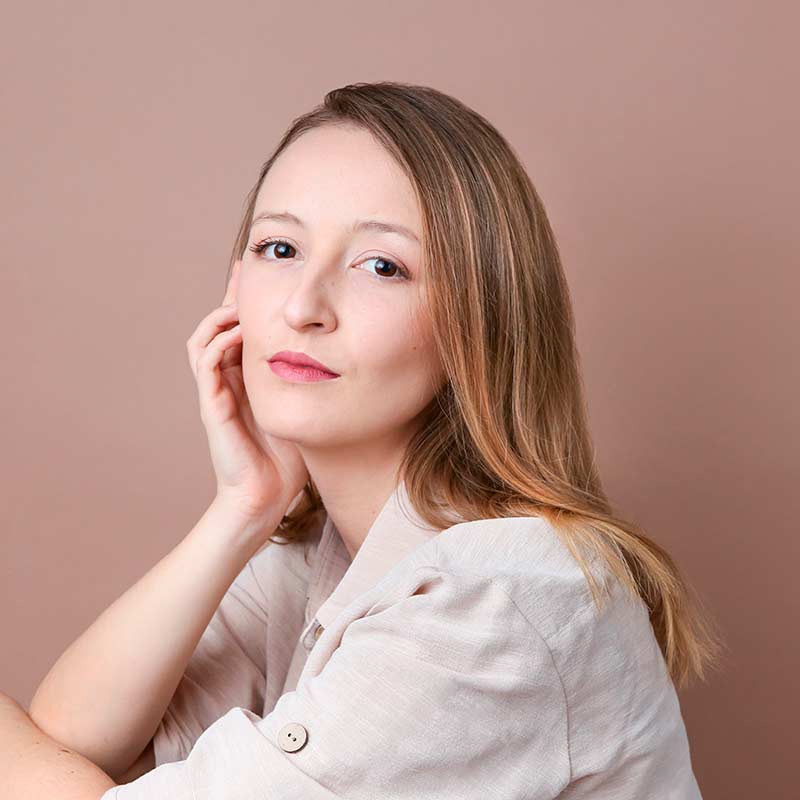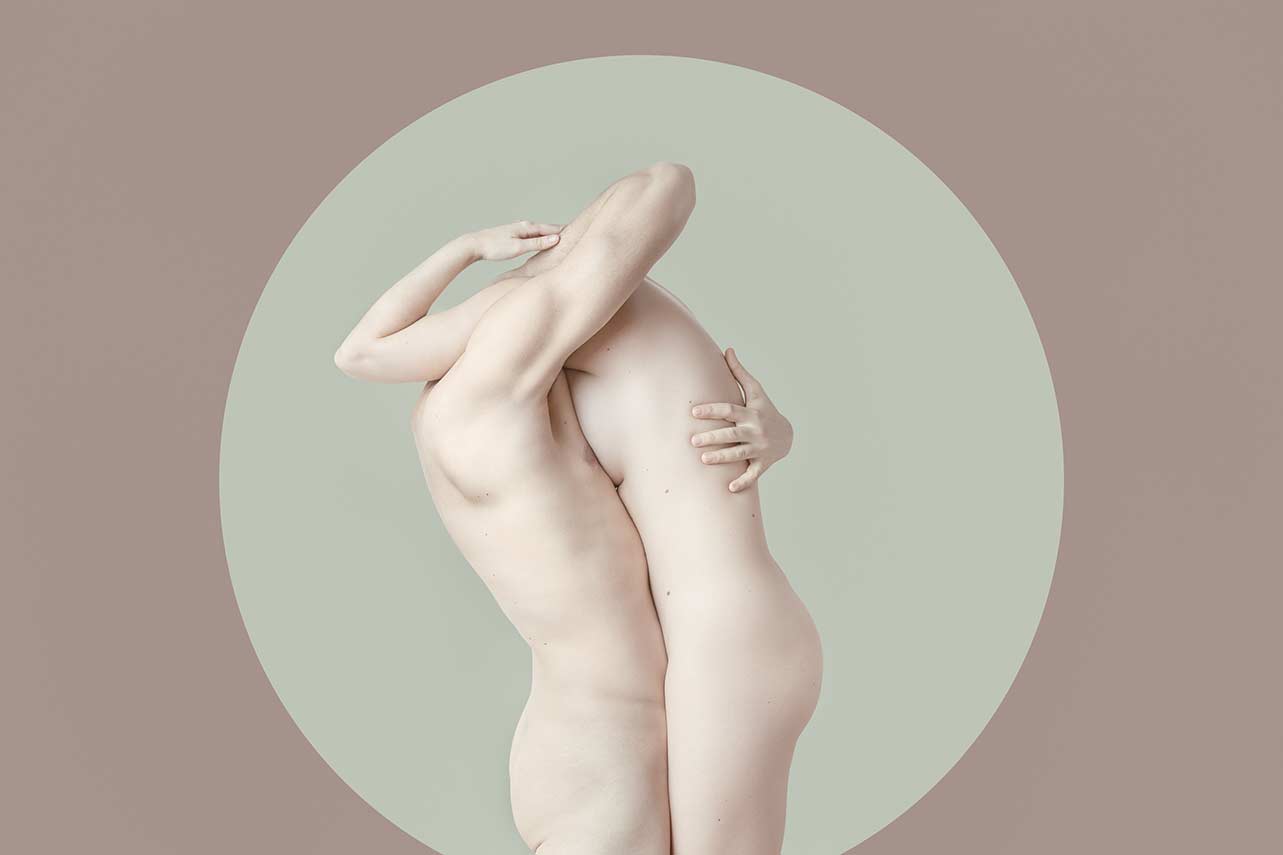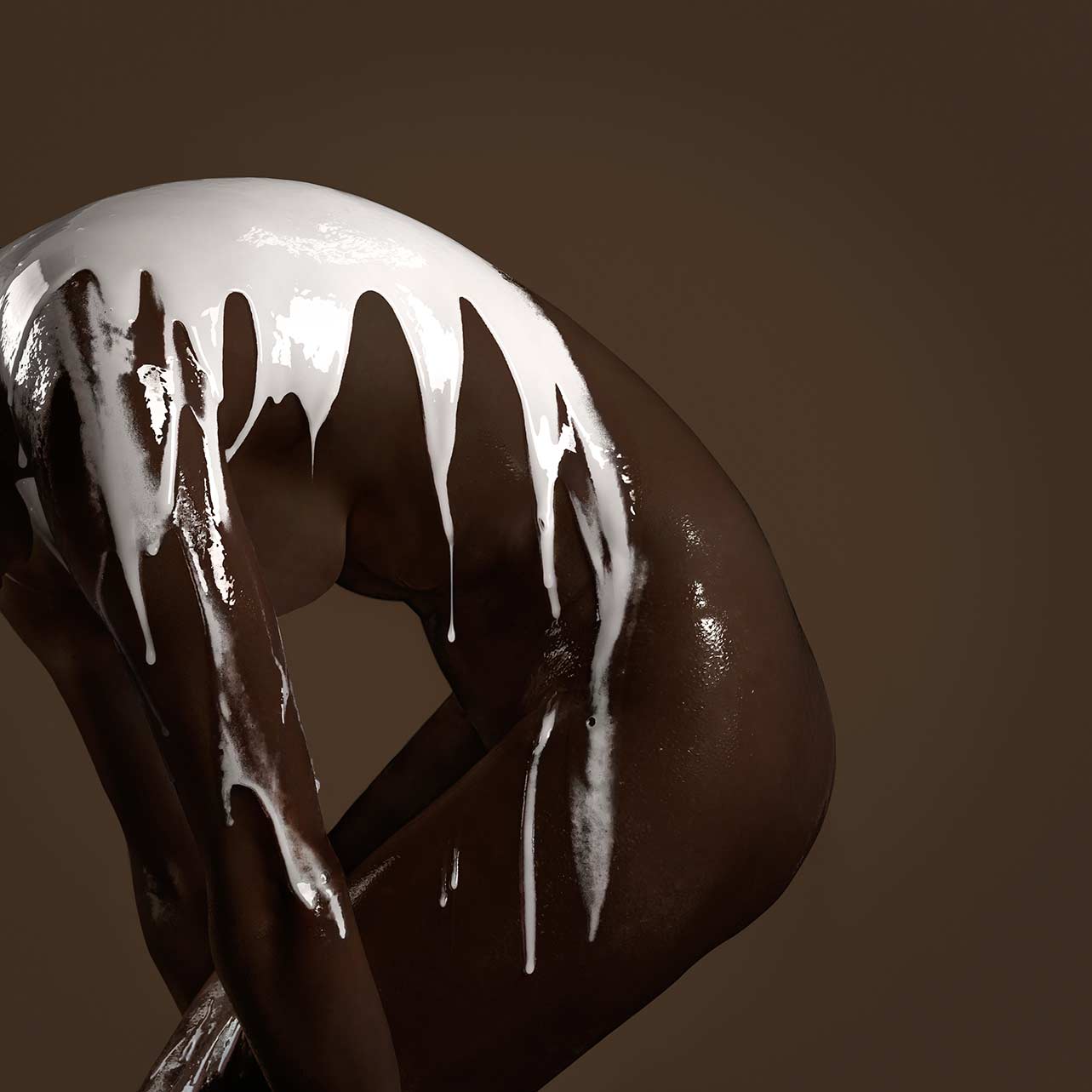
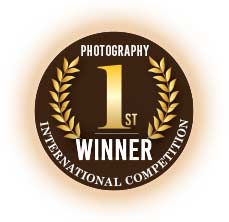
AN EXCLUSIVE INTERVIEW WITH VIKTORIA ANDREEVA | BY ARIEL SU
1ST PLACE WINNER AT THE INTERNATIONAL COMPETITION

Viktoria Andreeva © All rights reserved.
It’s a great pleasure to feature an exclusive interview with Viktoria Andreeva, the 1st Place Winner at the International Competition, a collaboration of the Florence Biennale, Art Market Magazine, and Lens Magazine.
Viktoria Andreeva is a highly acclaimed fine art photographer known for her surreal creations that center around the human body. Her distinctive approach involves transforming the figure, often creating an otherworldly atmosphere that blurs the line between reality and illusion, natural and artificial.
As a former ballet dancer, Viktoria’s signature style is deeply rooted in her fascination with the human form. Her artistic vision delves into the complex relationship between human beings and their surroundings, exploring themes such as identity, human duality, and metamorphosis. Andreeva’s precise technique leaves open questions for the viewer, encouraging them to engage in deeper contemplation. Born and raised in Bulgaria, she moved to Vienna in 2015 to study Photography and Audiovisual Media at the College of Arts die Graphische. During this time, she embarked on a dream book project in collaboration with six ballet dancers from the historic Vienna State Opera.
In recognition of her artistic achievements, Viktoria has received numerous prestigious awards, including a Gold medal in the Fine Art/Nudes category at the Trierenberg Super Circuit – one of the most distinguished photography competitions in the world. In 2022, she was placed among the World’s Top 10 Fine Art Photographers by the jury of the One Eyeland Awards. Her work has been featured in exhibitions in Paris, New York, Rome, Milan, Hong Kong, Budapest, and beyond.
Based in Vienna, Austria, Viktoria continues pushing contemporary photography’s boundaries through her thought-provoking creations. Recently, she won the international Open Call competition in the Photography category, a collaboration of XVI Florence Biennale, Art Market Magazine, and Lens Magazine, and she will be exhibiting her work as a Guest of Honour at the event in Florence, Italy.
“As a former ballet dancer, body language has always been one of my biggest passions. That is why the figure plays such a significant role in my photography. I like to observe and capture its curves in an abstract and surreal way, seeking to emphasize the body as a sculptural composition element.
By hiding and revealing parts of it, I create a mystical world, which leaves open questions for the audience.
I often incorporate floral motives in my work since they symbolize rebirth, creation, and metamorphosis, the main parts of our identity.”
AN EXCLUSIVE INTERVIEW WITH
VIKTORIA ANDREEVA
| BY ARIEL SU
“While it may sound cliché, I genuinely believe that it is essential to follow your inner instincts. Above all, I think it is important to constantly question yourself and reflect on your visual decisions.”
Lens Magazine: Dear Viktoria, Thank you for this interview, and congratulations on winning first place in the international competition. This is not the first time we have presented your magnificent work; we had the privilege of publishing several articles already in our magazines in the past years, so we are also very familiar with your progress during recent years. But still, let’s start with the beginning. What drew you to the fine art photography field in the first place? Were you influenced by the surrounding artistic atmosphere since childhood?
Viktoria Andreeva: Firstly, I would like to thank you for this tremendous honor. I am glad to be featured in your beautiful magazine once again.
I have been drawn to the art world from a very early age. When I was six, I started dancing classical ballet, which gradually became a big part of my life. While I was growing up, I was deeply passionate about performing on stage and being part of the magical world of dance and music. Later, I started photographing my friends from the Ballet Academy, naturally leading me to further explore the fine art field. Even more, after I moved to Vienna in 2015.
I had the incredible opportunity to collaborate on a book project with six Vienna State Opera dancers.
This moment felt like my childhood dream came true before my eyes, surpassing my wildest expectations.
I was fortunate enough to dive into this magnificent world and see a glimpse behind the big curtains. Being a dancer myself has taught me a lot about devotion, discipline, and patience. Something that I will always be grateful for.
L. M.: When and how did you develop your current style? Have you been influenced by a specific art movement or other photographers?
V. A.: I have been photographing for over twelve years, and it’s been a very fluent and natural process. Working with so many dancers has shaped my vision in this direction. Even though I was fascinated by the classical poses, I soon realized I wanted to go beyond dance photography alone. What truly captivated me was the extraordinary potential of the human body—its ability to undergo metamorphosis, heal, and regenerate. And above all, to tell a story through the slightest movement without the need for words. I started using the body as a composition element that transforms into a breathing sculpture. I aimed to convey a feeling that provokes the viewer to contemplate the story through his eyes and emotions. I have been influenced by many different mediums. I find enormous fascination in sculpture, painting, and 3D Art.
“I often find myself inspired by everyday situations or conversations. I like to analyze and reflect on my emotions, let them flow, and translate them into visual stories. Sometimes, even simple objects I come across can be a spark for my imagination.”
L. M.: Where the inspiration comes from?
V. A.: I often find myself inspired by everyday situations or conversations. I like to analyze and reflect on my emotions, let them flow, and translate them into visual stories. Sometimes, even simple objects I come across can be a spark for my imagination.
L. M.: In your work, we are witnessing an abstract and surreal artistic language; you mainly focus on the human body, identity, human duality, and metamorphosis, expressed by ‘broken’ or ‘Cut’ figures with missing organs, isolated from society or combined with others. What is the philosophical idea behind your work? Are you trying to make a more profound statement regarding our current reality?
V. A.: In my photography, I use the human body as a vessel to convey universal emotions that explore the depths of human nature. I have always been captivated by narratives showcasing our identity’s complexity and diverse facets. Something that may seem balanced and harmonized at first glance, yet disturbing in a way. The deconstruction and depersonalization of the subjects aim to create an abstract form distanced from society’s norms and expectations. Hiding the face or distorting the entire figure became part of my work process, as I wanted to separate the body from the personality and lay the focus purely on the concept. I strive to create work that is not solely visually appealing but also emotionally nourishing.
Right: “Melting.” 2019
Viktoria Andreeva © All rights reserved.
L. M.: What can you tell us about the importance of communication with the model during the photo session? Most of your photographs are based on nude figures. Is a deep and close acquaintance important to your work?
V. A.: Building trust and establishing a solid connection with the models is vital to my projects. I am fortunate enough to work with people who share my creative vision and are open to involvement in the process. This is one of the reasons I love working with dancers, in particular, as they have a unique approach to the art of movement. I also like working with myself on some of my ideas, as I have the freedom to express myself even more through self-portraiture.
“I use the human body as a vessel to convey universal emotions that explore the depths of human nature. I have always been captivated by narratives showcasing our identity’s complexity and diverse facets. Something that may seem balanced and harmonized at first glance, yet disturbing in a way.”
L. M.: You use clean lines and one color background. Is it intended to radicalize the characters out of the background?
V. A.: As I see it, It is essential that the viewer focuses purely on the subject without any elements that could be distractive. This is one of the reasons why most of my recent projects are shot in a very minimalistic and clear environment. Sometimes I also use the background to complement and enhance the whole composition. For example, in one of my recent works: “Finding the Balance.”
L. M.: Tell us about the workflow, from the stage of the idea until the final outcome. Do you do the editing/post-processing yourself? Which software is mainly being used?
V. A.: The process could vary depending on the project. In most cases, I work entirely alone with the models or with an additional assistant. It typically begins with a draft and keywords of an idea that I have in mind. However, I like experimenting and letting this idea transform during the shooting.
The post-processing and finalizing the series is the last stage, and I spend many hours ensuring each detail falls into place.
By carefully editing and layering the skin texture, I aim to create an otherworldly feeling. My objective is to blur the boundaries between reality and illusion and to challenge perceptions of what is natural and artificial. I mainly use Photoshop to achieve the desired result.
L. M.: During the past years, you have been internationally awarded by many competitions around the globe. From your profound experience in the field, how would you describe the professional photography field? Are there any issues (For example, in professional communication/agency work, etc.) you wish could have been different or more developed?
V. A.: We live in a very fast-paced society. It is fascinating to see what the future holds, but it could also be overwhelming for many artists to adapt. Specifically, I find it challenging to present my work in fine art nude photography because I, like many artists, heavily rely on social media platforms.
As the algorithm changes, many artists are banned or lose access to their accounts and the audience they’ve been building for years. Respectively, this also leads to less visibility for possible projects or collaborations. After many discussions with fellow artists in this field, it is very much necessary to have an alternative dedicated space to share this art form.
L. M.: What can you tell us about your studio? Do you have a permanent team working with you?
V. A.:I do not have a fixed studio or a team at the moment, as I am working on different locations depending on the project. Often I enjoy being spontaneous and experimenting at my home studio.
L. M.: This October, your work will be presented on mass media boards across Florence and exhibited at the XIV Florence Biennale respectable art event. Are you excited about this massive exposure? What’s the future hold? Any other special exhibitions in the upcoming months?
V. A.: It is hard to describe how excited and honored I am to be selected as the Photography Winner in this year’s Open Call competition. This enormous recognition inspires me and motivates me to expand my horizons further. What excites me even more, is the possibility of presenting new work that has never been revealed to the public. Besides the Biennale, I am currently working on a large-scale project with another artist to be exhibited next year.
L. M.: What advice can you give the young photographer trying to make his way in the field?
V. A.: While it may sound cliché, I genuinely believe that it is essential to follow your inner instincts. Above all, I think it is important to constantly question yourself and reflect on your visual decisions.
I would ask myself: “Why do I like to use this color? What makes this particular image stand out for me? Why am I drawn to this type of lighting?”.
By taking these small steps and seeking answers, you can significantly enhance the understanding of your own work. Embrace curiosity, step outside your comfort zone, experiment, make mistakes and be patient with yourself, as progress takes time.

